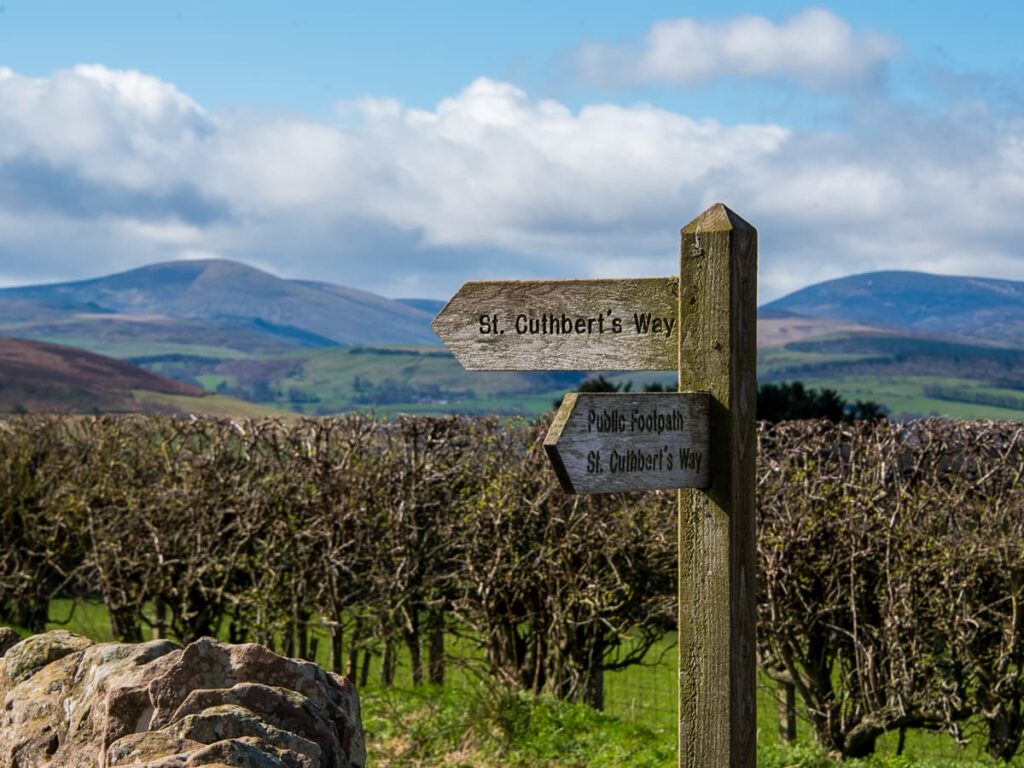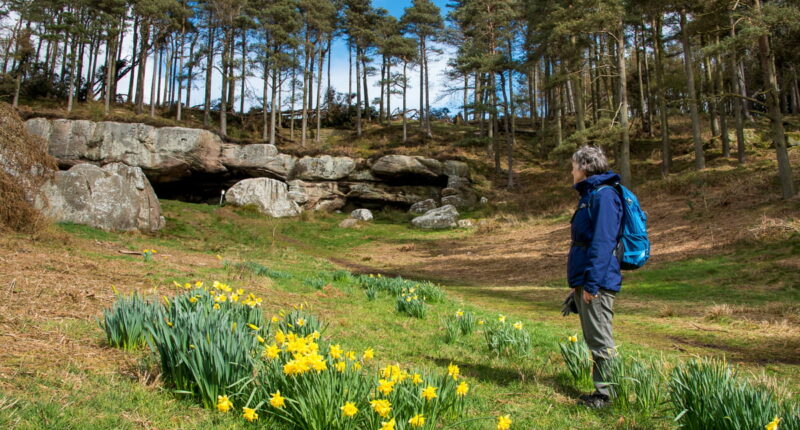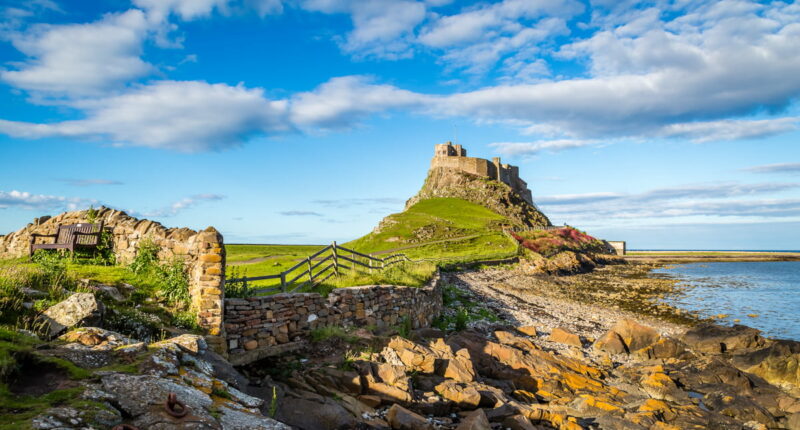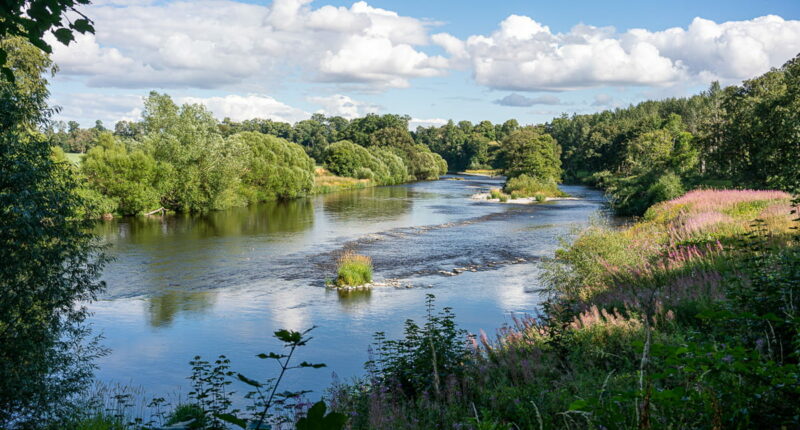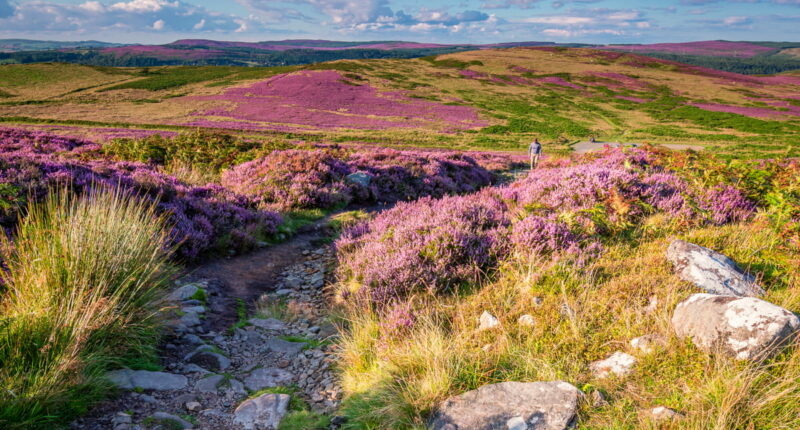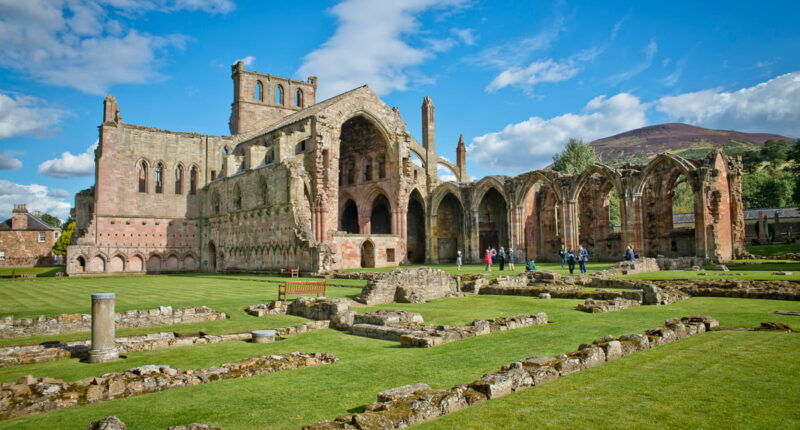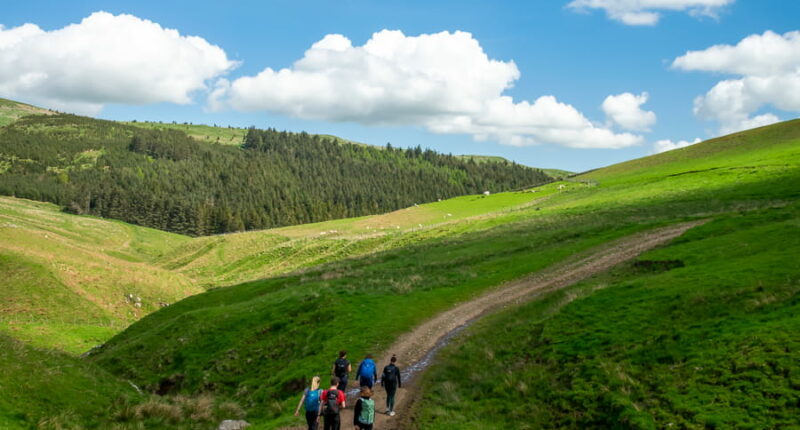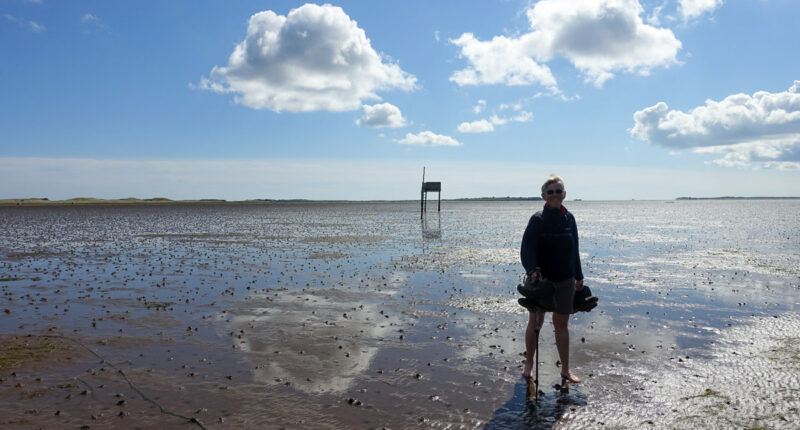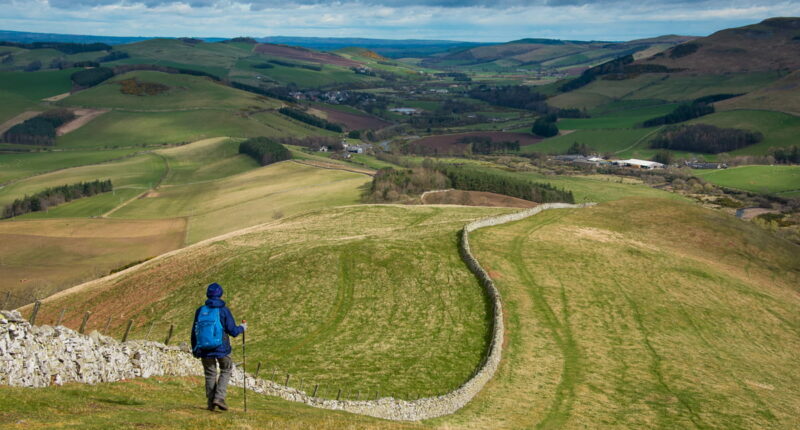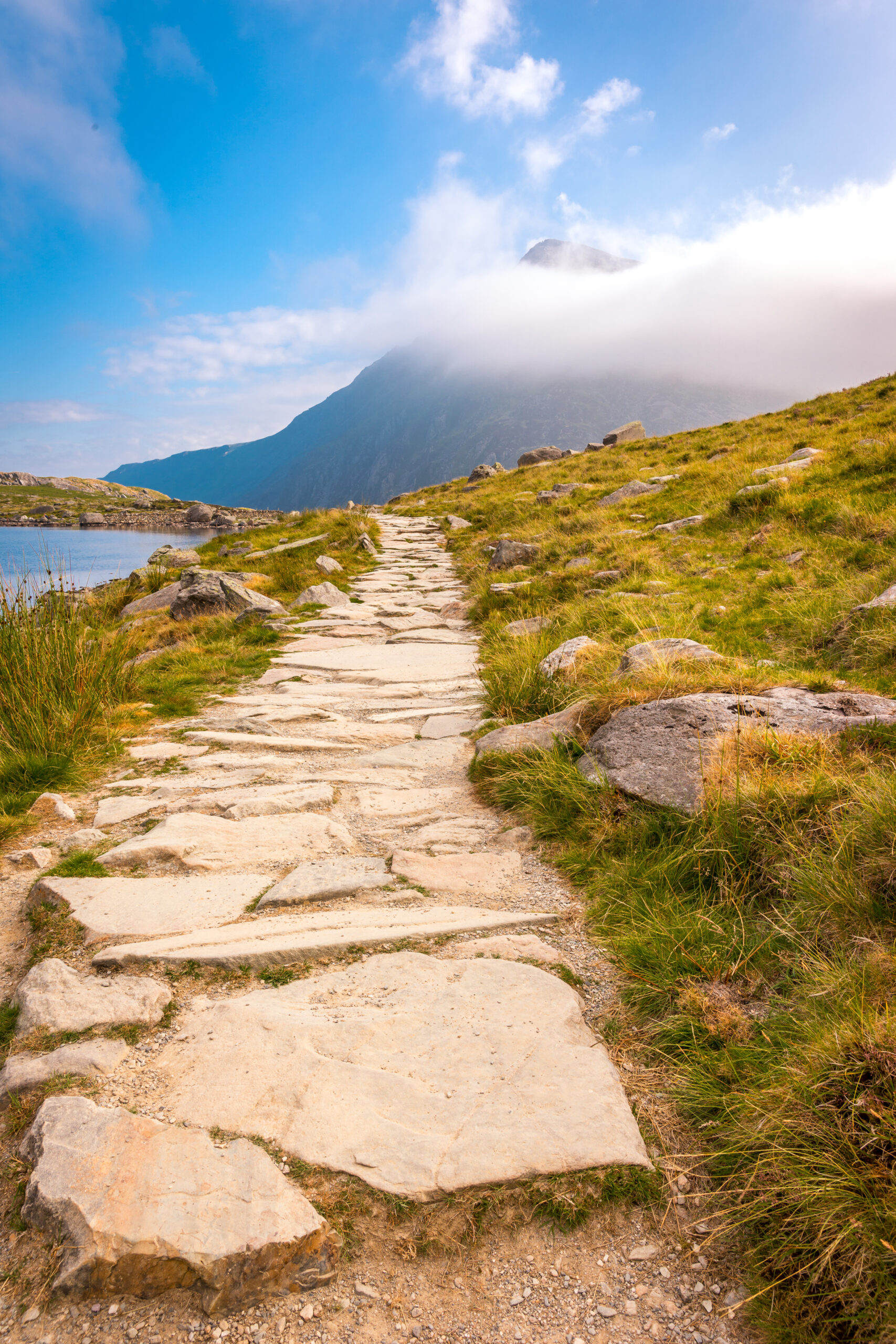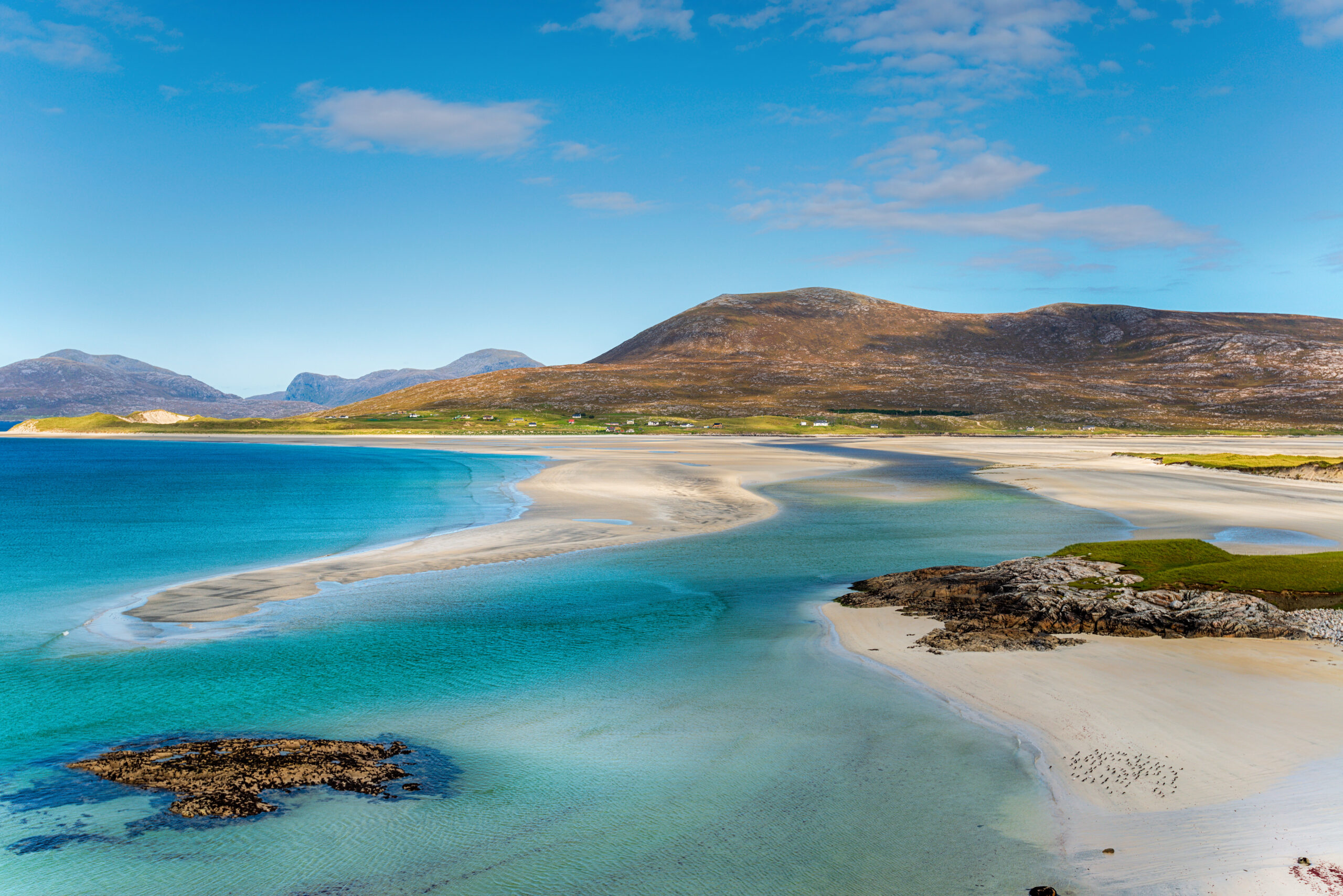Walking St Cuthbert’s Way: A Pilgrimage from Melrose Abbey to Holy Island
From the red sandstone ruins of Melrose Abbey to the tidal causeway leading to the Holy Island of Lindisfarne, St Cuthbert’s Way offers an uplifting journey through some of the finest scenery and historic sites in the Scottish Borders and Northumberland.
The route travels through the Eildon Hills, follows the banks of the River Tweed, crosses wild open moorland, and climbs the northern slopes of the Cheviot Hills before crossing the ancient border from Scotland into England.
With decades of experience crafting self-guided walking holidays in Britain & Ireland, our team knows what makes a walk memorable – not just the scenery, but the stories, history, and people along the way. If you’re considering walking St Cuthbert’s Way, we’ve gathered answers to the most frequently asked questions to help you plan with confidence.
- What is St Cuthbert’s Way?
- Is St Cuthbert’s Way a Pilgrim Route?
- How long does it take to walk St Cuthbert’s Way?
- When is the best time of year to walk St Cuthbert’s Way?
- What are the highlights of St Cuthbert’s Way?
- What kind of terrain and landscapes can I expect along St Cuthbert’s Way?
- What is the toughest section of St Cuthbert’s Way?
- Is St Cuthbert’s Way well waymarked?
- Is there public transport available along St Cuthbert’s Way?
- Can I walk St Cuthbert’s Way in reverse?
- Where should I include an additional day on St Cuthbert’s Way?
- What should I pack for walking St Cuthbert’s Way?
- What type of accommodation is available along St Cuthbert’s Way?
- Where can I eat and drink along St Cuthbert’s Way?
- How can I book a walking holiday on St Cuthbert’s Way?

What is St Cuthbert’s Way?
St Cuthbert’s Way is a 62.5-mile (100 km) long-distance trail that links the Scottish Borders with the Northumberland coast in England.
Named after St Cuthbert, a 7th-century Anglo-Saxon monk and bishop who became one of northern England’s most venerated saints, the route begins in Melrose, where he entered monastic life, and ends on the tidal island of Lindisfarne, where he served as Abbot and was laid to rest in 687 AD.
Today, the trail is known not only for its historical and spiritual significance, but for its diverse scenery – from rolling farmland and riverside paths to hilltops and sea views.
Is St Cuthbert’s Way a Pilgrim Route?
Yes. The trail follows the historic journey of St Cuthbert, whose legacy continues to resonate across this region. For over a thousand years, Lindisfarne has drawn pilgrims seeking reflection and meaning.
While many walk the route for the landscape and culture, others approach it as a personal or spiritual journey. The final crossing to Holy Island, across the sands of the Pilgrim’s Path, is an unforgettable highlight for many walkers.
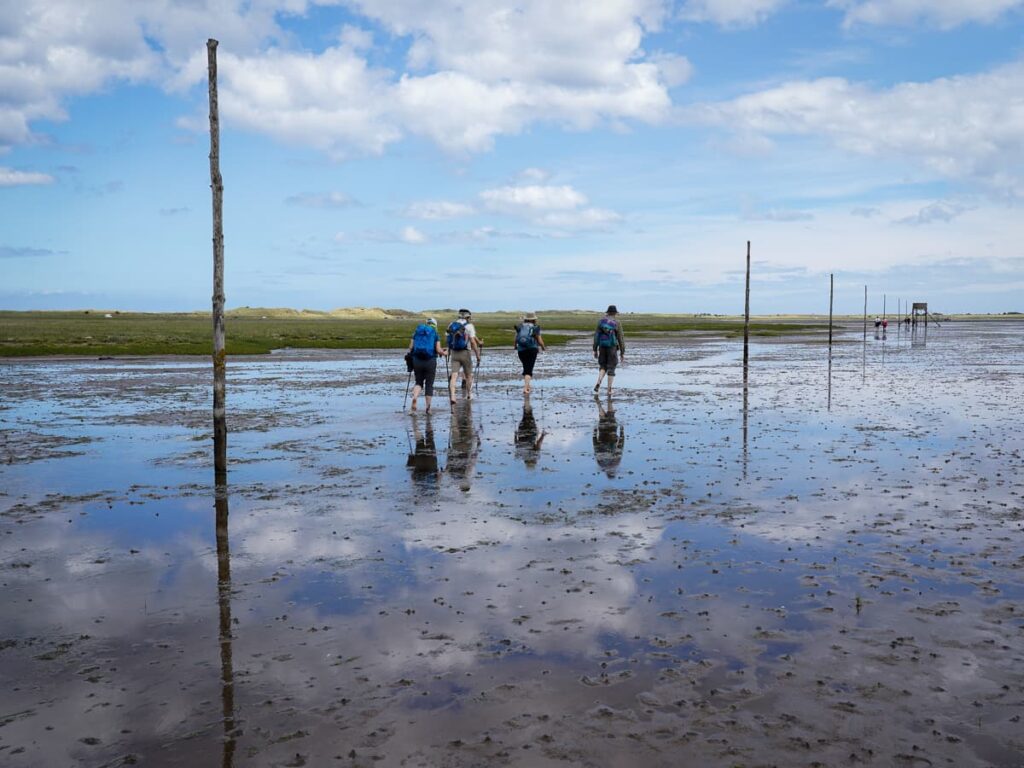
How long does it take to walk St Cuthbert’s Way?
We offer four suggested itineraries for walking St Cuthbert’s Way, ranging from four to seven days of walking. Our most popular option, SCW3, completes the trail over six days and seven nights, averaging 10.5 miles per day.
If you prefer a slower or more energetic pace, we’d be delighted to use our local knowledge to tailor an itinerary to suit your needs and ability.
When is the best time of year to walk St Cuthbert’s Way?
We recommend walking the trail between March and October, when daylight hours are longer and luggage transfers are available. Each season offers something unique:
- May to June: Fresh green landscapes, blooming wildflowers, and mild weather.
- July to August: Long days, warm temperatures, and the chance to spot seals from Lindisfarne.
- September to October: Quieter trails, golden light, and rich autumn colour.
For detailed route information and official maps, visit the St Cuthbert’s Way official website.
For quieter periods or weather-specific advice, our Travel Specialists are always happy to help. Whenever you choose to go, walking St Cuthbert’s Way offers an ever-changing perspective on the Borders and Northumberland.
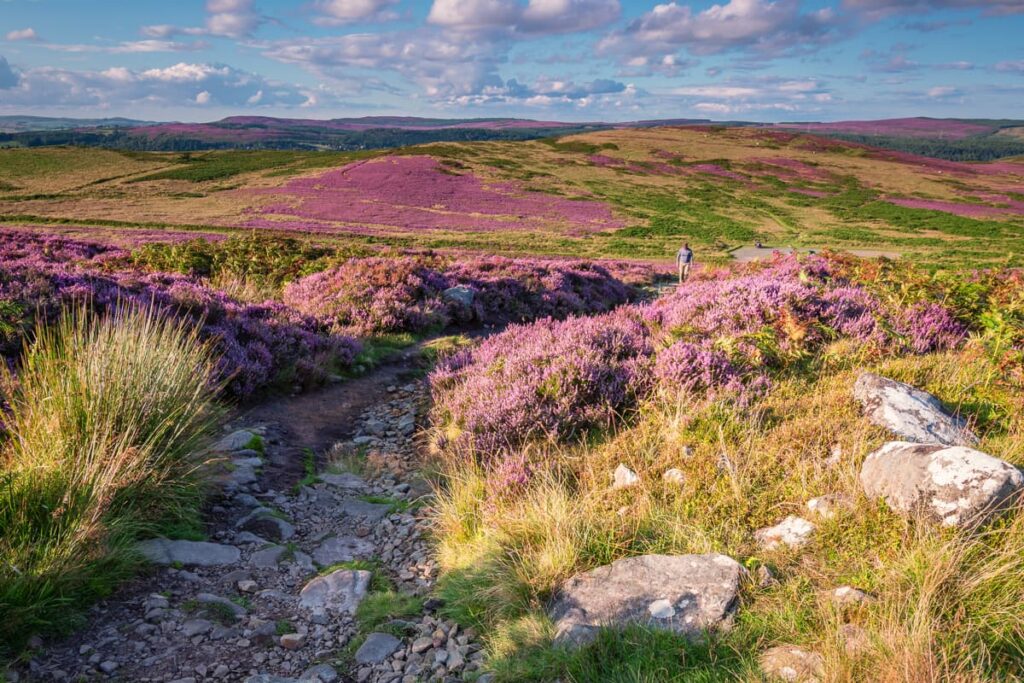
What are the highlights of St Cuthbert’s Way?
The highlights of walking St Cuthbert’s Way are as varied as the landscapes themselves. Every stretch of the route brings something different, but a few of our favourite moments include:
- Melrose Abbey: One of the Great Border Abbeys and the trail’s atmospheric starting point. Learn more about visiting Melrose Abbey.
- Eildon Hills: Distinctive landmarks with ancient hill forts and expansive views.
- St Cuthbert’s Cave: A peaceful woodland shelter said to have once protected the saint’s remains.
- Pilgrim’s Path: A memorable crossing to Holy Island, following wooden posts across the tidal sands. Check Holy Island tide times and crossing safety.
What kind of terrain and landscapes can I expect along St Cuthbert’s Way?
The trail offers a varied but approachable mix of terrain: moorland, farmland, riverside tracks, and minor roads. The total ascent is around 2,300 metres (7,500 feet), with moderate climbs in areas such as the Eildon Hills and the Cheviots.
Walkers can expect a changing backdrop of pastoral countryside, quiet rivers, open hill views, and the dramatic coastal scenery of Lindisfarne. Walking St Cuthbert’s Way is manageable for most reasonably fit walkers, with rewarding views at every stage.
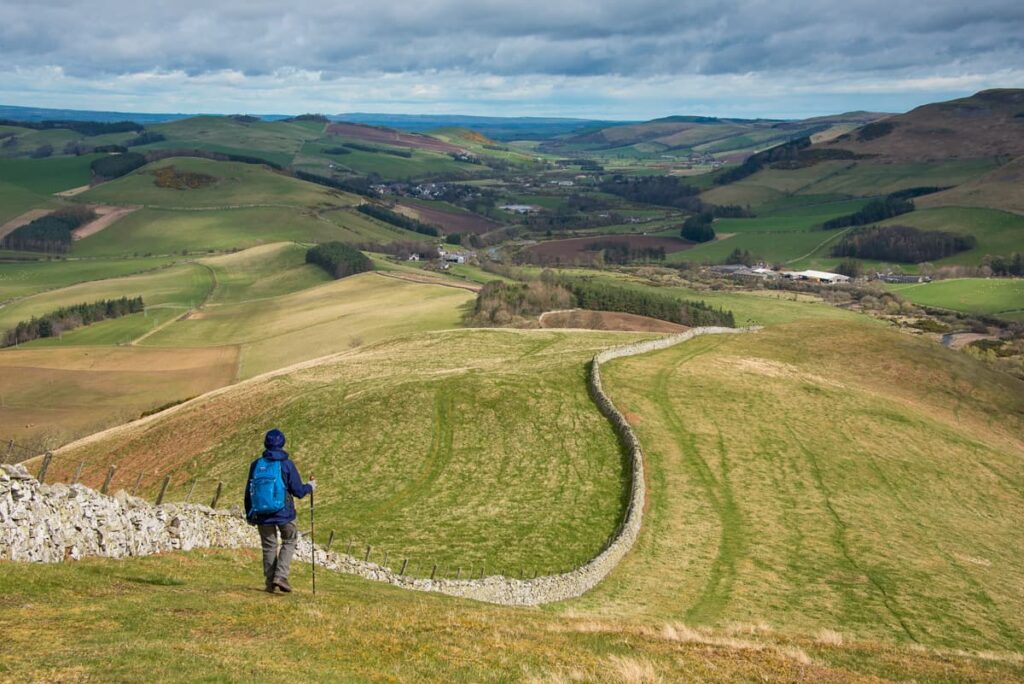
What is the toughest section of St Cuthbert’s Way?
The most demanding stretch is between Kirk Yetholm and Wooler. At 13 miles, this stage involves sustained climbs through the Cheviot Hills and cannot be easily shortened.
Though more remote than other sections, it offers striking scenery and a true sense of crossing into a new landscape as you descend into England.
Is St Cuthbert’s Way well waymarked?
Yes. The route is clearly signposted with waymarkers showing a white cross. In more remote areas, such as the Cheviots, signs are spaced further apart, so it’s worth consulting a map or guidebook as needed.
All Absolute Escapes holidays include a Cicerone guidebook and a Harvey map to support your journey.
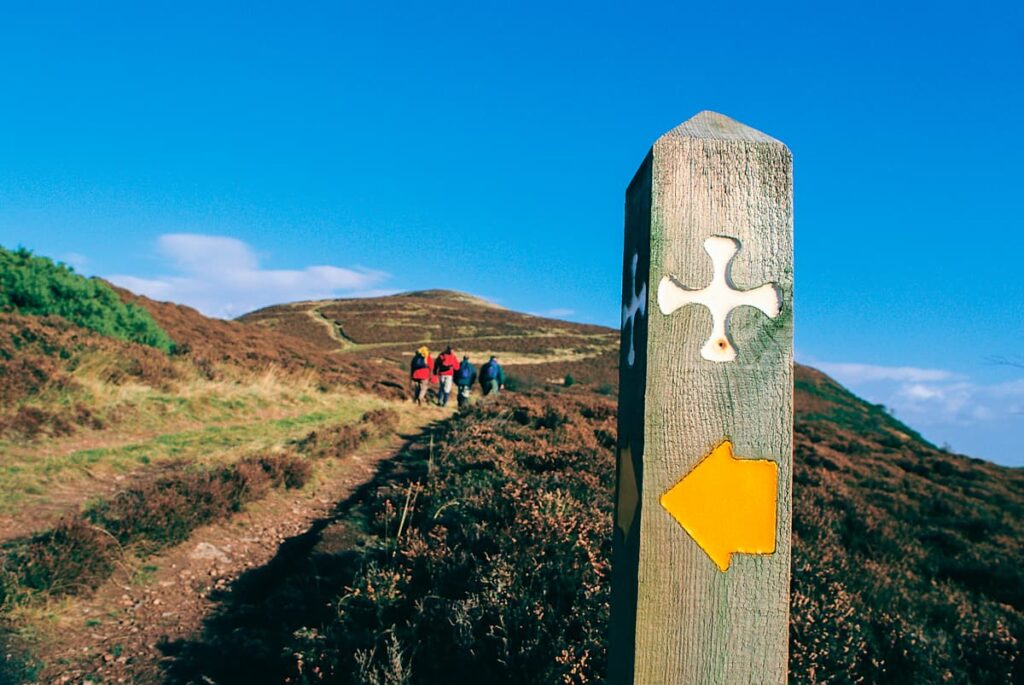
Is there public transport available along St Cuthbert’s Way?
Most towns and villages along the trail are served by public transport, particularly via Borders Buses. However, Kirk Yetholm and Wooler, which are located on the most remote section of the trail, are not as well-connected. Check current bus timetables and routes.
We provide details of recommended local taxi services should you need assistance during your walk.
Can I walk St Cuthbert’s Way in reverse?
Currently, we offer the trail in one direction only: Melrose to Lindisfarne. This follows the official waymarking, aligns with guidebook route notes, and simplifies logistics for the final tidal crossing.
We hope to offer a reverse itinerary in the future.
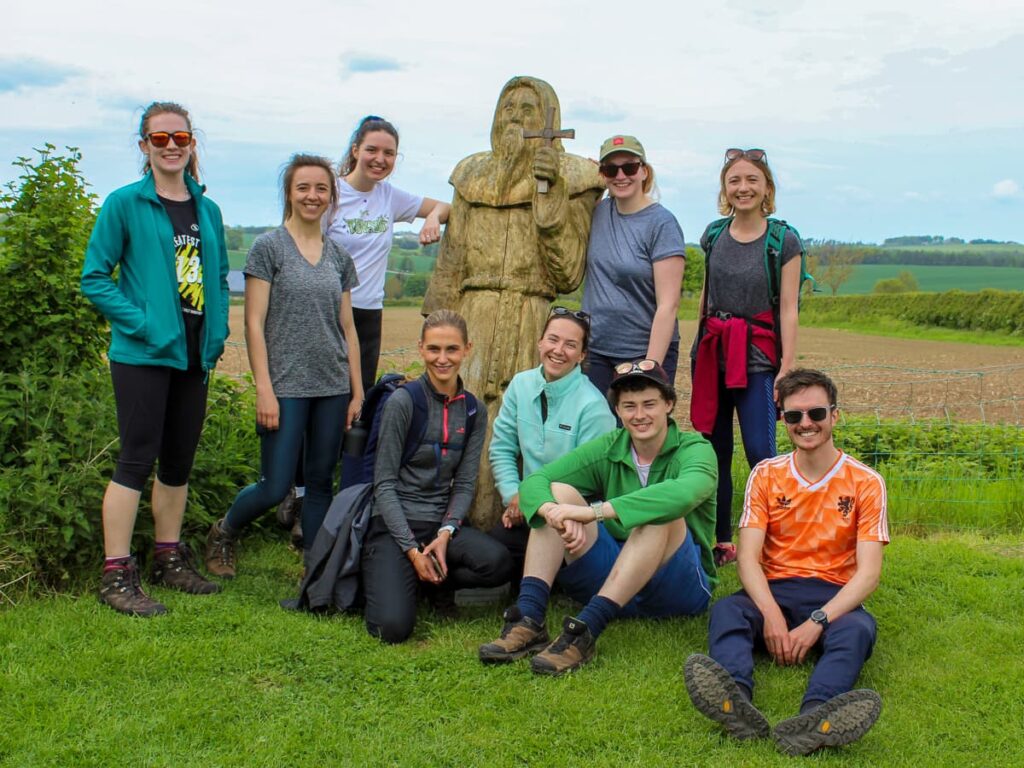
Where should I include an additional day on St Cuthbert’s Way?
The trail travels through some of the most scenic parts of the Scottish Borders and Northumbrian coast. Adding an extra day to your walking holiday gives you the chance to slow down, explore the landscape in more depth, and soak up the charm of the areas you visit along the way.
Here are two of our favourite recommendations:
Melrose
- Wander the charming streets of this picturesque town, stopping to relax in its welcoming cafés and restaurants.
- Explore the impressive ruins of Melrose Abbey, dating back to the 12th century.
- Delve into the area’s Roman heritage at Trimontium Museum.
Holy Island of Lindisfarne
- Experience the unique atmosphere of this tidal island, steeped in early Christian and Viking history.
- Enjoy tranquil walks across the dunes and beaches, where you’ll spot a wide variety of birdlife.
- Visit the ruins of Lindisfarne Priory and the nearby castle, originally built under the reign of Henry VIII.

What should I pack for walking St Cuthbert’s Way?
The most important items are comfortable, broken-in walking boots and clothing suitable for changeable weather. You can check the forecast each morning, but a waterproof jacket and trousers, sun protection, and a warm layer are great essentials to start with.
You’ll also want to bring a couple of refillable water bottles, high-energy snacks, a packed lunch, and some emergency chocolate. Trust us on this one – emergencies can be anything from a twisted ankle to a dip in motivation, and chocolate can make all the difference. Pack your favourite treats and take time to enjoy them at a scenic viewpoint.
Walking poles can be helpful on the hillier sections, especially if your knees need a bit of extra support. Don’t forget blister plasters and a spare pair of dry socks just in case.
Absolute Escapes walking holidays include door-to-door luggage transfers, leaving you free to walk each day with a daypack. A full recommended kit list will also be provided as part of your information pack.
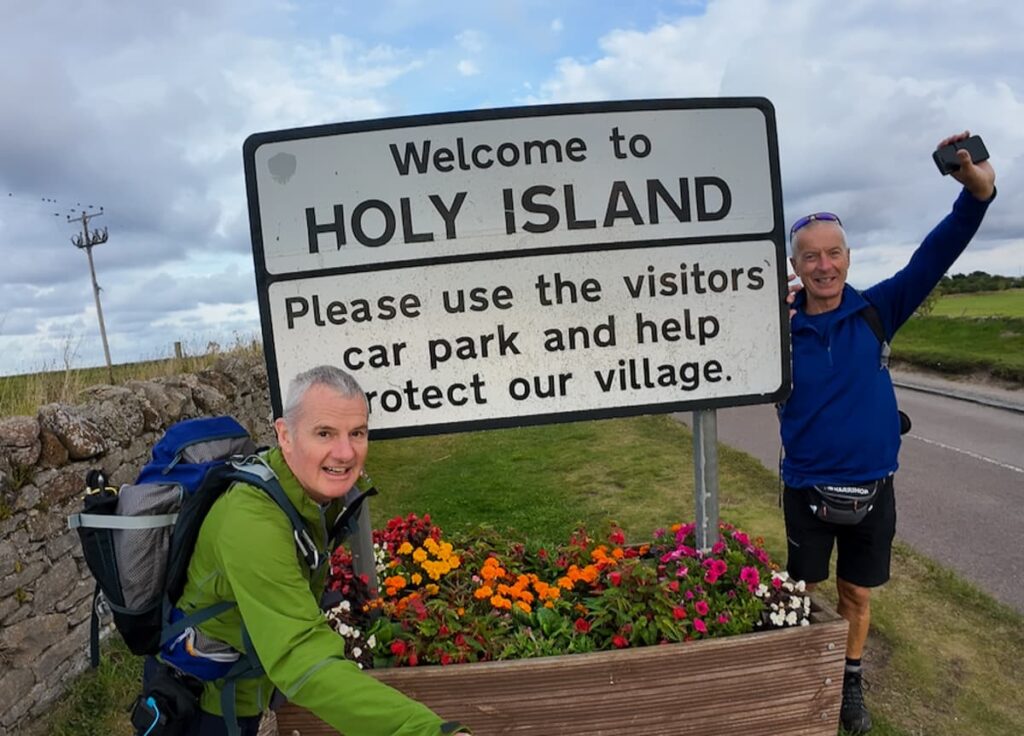
What type of accommodation is available along St Cuthbert’s Way?
We offer both Standard and Premium packages using hand-picked accommodation. This includes B&Bs, traditional inns, and small hotels – chosen for their comfort and warm hospitality using our first-hand local knowledge.
In more remote areas, you may be transferred off-trail, but we ensure high-quality stays with a warm welcome throughout. Accommodation examples include:
- The Townhouse Hotel, Melrose (Premium)
- Buccleuch Arms, St Boswells (Standard)
- Allerton House, Jedburgh (Standard/Premium)
Where can I eat and drink along St Cuthbert’s Way?
There is a flourishing food scene across the Borders and Northumberland. A few of our favourite places to dine include:
- Provender, Melrose: Modern Scottish cuisine in a relaxed, elegant setting.
- The Border Hotel, Kirk Yetholm: Known for excellent local produce, game, and fish.
- The Ship Inn, Lindisfarne: A characterful pub with great food and its own range of Holy Island gins.
How can I book a walking holiday on St Cuthbert’s Way?
We would be delighted to arrange an unforgettable self-guided walking holiday for you. Please visit our St Cuthbert’s Way page for further information and to browse our suggested itineraries and daily walking distances.
Once you’re ready to proceed, simply send us an online enquiry, or contact our friendly team via phone +44 (0)131 610 1210 or email at enquiries@absoluteescapes.com. We’ll take care of everything, leaving you free to enjoy one of Britain’s most rewarding long-distance trails.
If walking St Cuthbert’s Way is on your horizon, our expert team is here to help turn your plans into an unforgettable journey.
We look forward to hearing from you!
Erin Meek & Sine Nielsen
